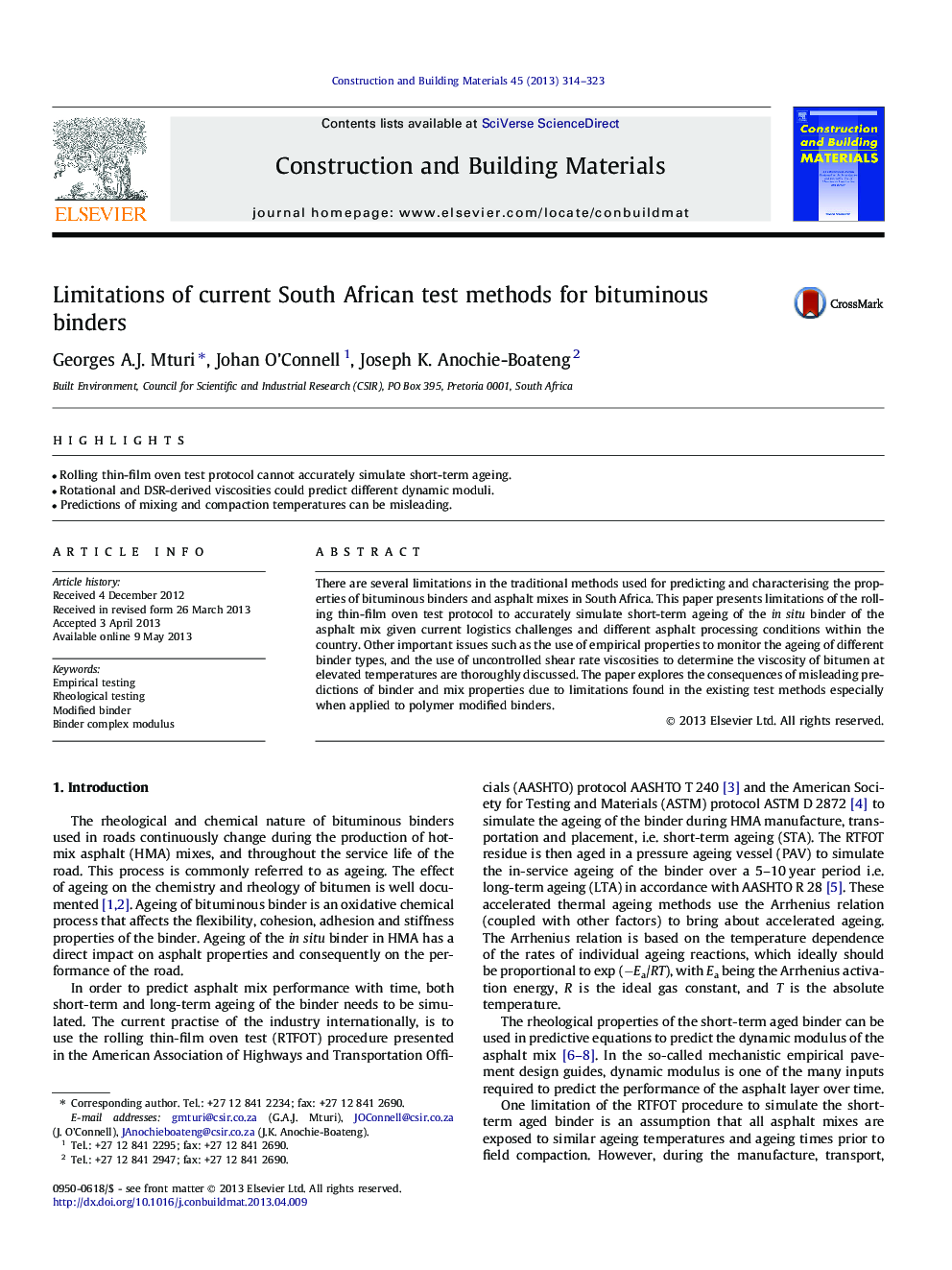| Article ID | Journal | Published Year | Pages | File Type |
|---|---|---|---|---|
| 258231 | Construction and Building Materials | 2013 | 10 Pages |
•Rolling thin-film oven test protocol cannot accurately simulate short-term ageing.•Rotational and DSR-derived viscosities could predict different dynamic moduli.•Predictions of mixing and compaction temperatures can be misleading.
There are several limitations in the traditional methods used for predicting and characterising the properties of bituminous binders and asphalt mixes in South Africa. This paper presents limitations of the rolling thin-film oven test protocol to accurately simulate short-term ageing of the in situ binder of the asphalt mix given current logistics challenges and different asphalt processing conditions within the country. Other important issues such as the use of empirical properties to monitor the ageing of different binder types, and the use of uncontrolled shear rate viscosities to determine the viscosity of bitumen at elevated temperatures are thoroughly discussed. The paper explores the consequences of misleading predictions of binder and mix properties due to limitations found in the existing test methods especially when applied to polymer modified binders.
